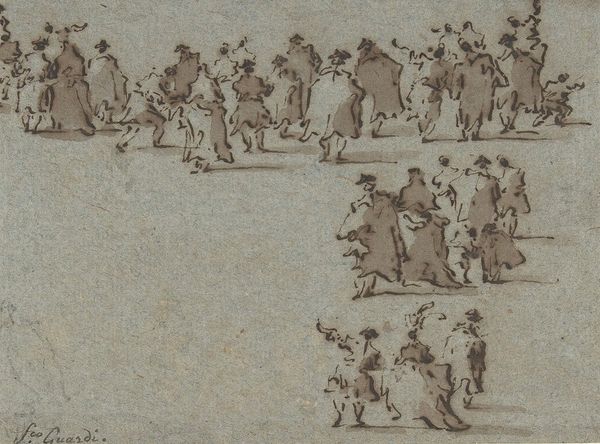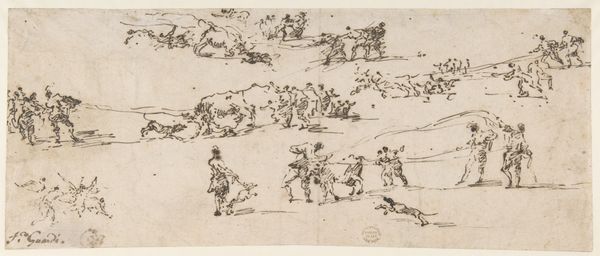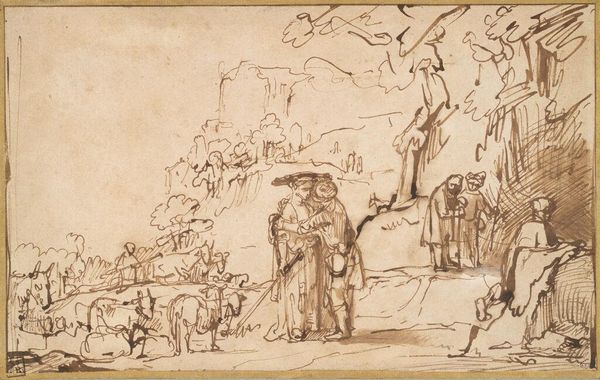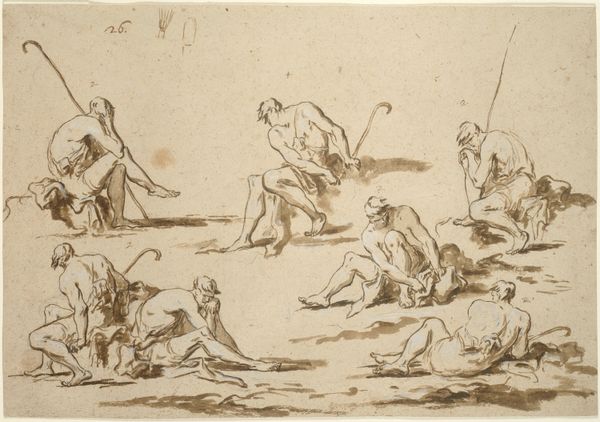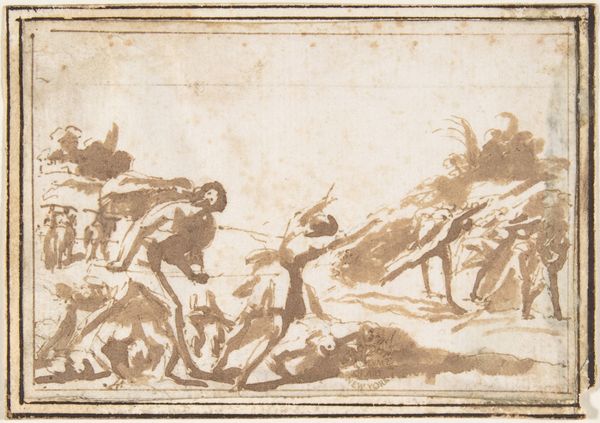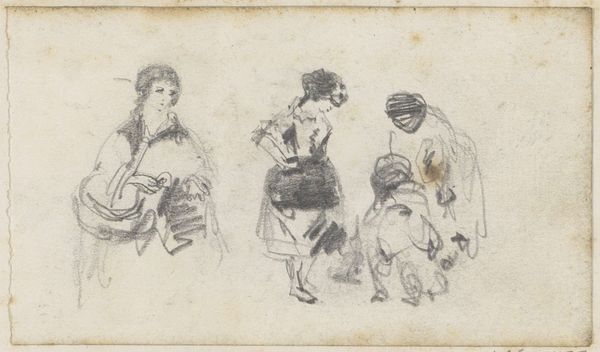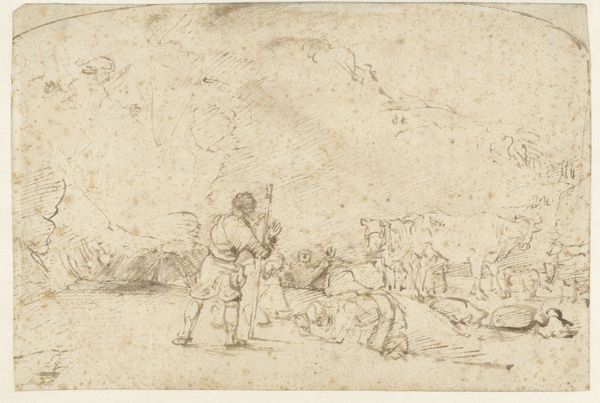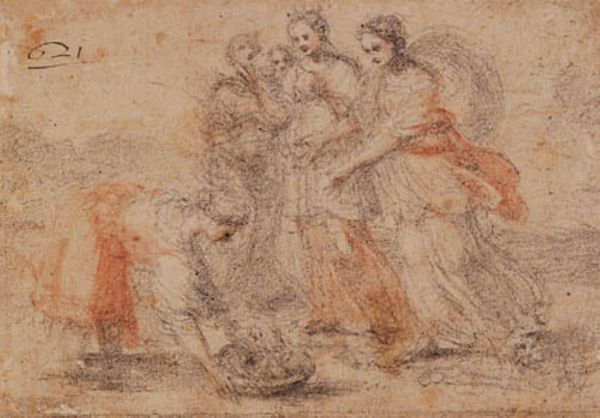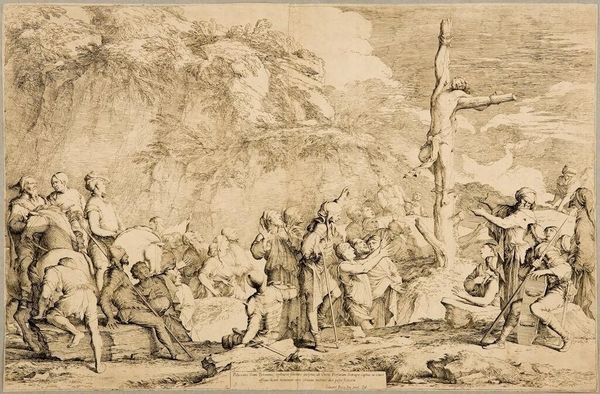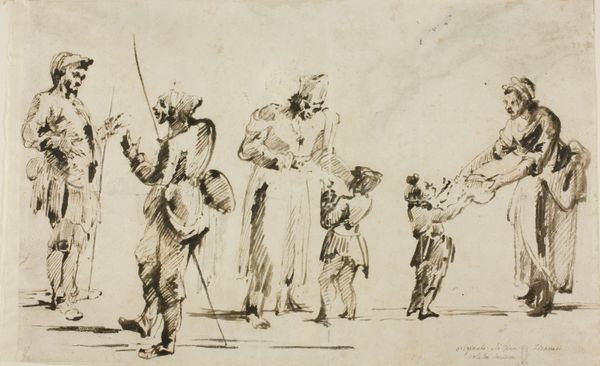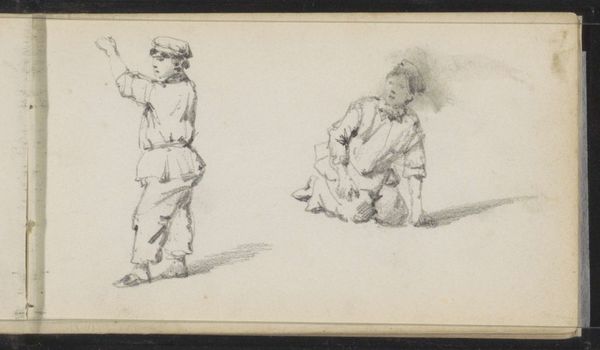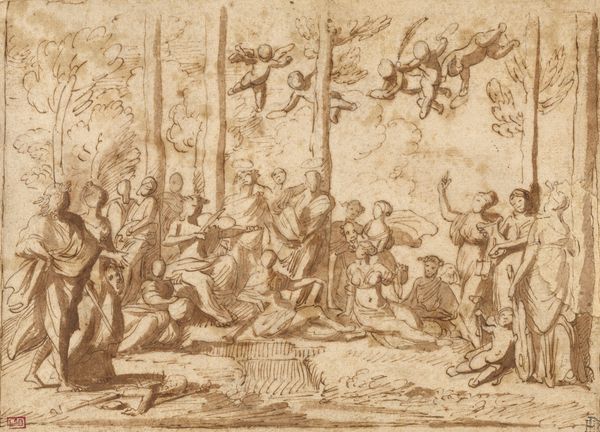
Copyright: Public Domain: Artvee
Curator: We're looking at "Studies for Groups of Walking Dressed Figures" by Francesco Guardi, dating back to sometime in the 18th century. Editor: It's light and almost fleeting; like a half-remembered dream captured in ink. The figures are rendered so economically. Curator: Absolutely. The artist is employing brown ink wash over graphite on laid paper. Notice how Guardi suggests form and movement through the strategic placement of these delicate lines and washes, creating a lively, dynamic composition despite its modest scale. Editor: The paper itself plays a huge part. It isn't merely a passive surface; its texture actively engages with the ink, contributing to the sketch's airy and spontaneous quality. One wonders about the paper's origins; the labor, trade, and access influencing Guardi's material choices. Curator: Fascinating point. Let’s return to the arrangement of figures, seemingly distributed without an immediately clear organizing logic. This may reflect Guardi’s characteristic freedom from rigid academic constraints. We have several clusters; it is like observing multiple conversations happening simultaneously. Editor: There’s something inherently process-driven about the entire drawing. It feels like we are witnessing Guardi work through ideas, making sketches that function both as figure studies and as glimpses of society. It highlights a segment of society that often goes unacknowledged: people doing daily errands, making money or going shopping, as background activities that support a particular wealthy culture. Curator: That reading complicates notions of Venice as purely a site of opulent fantasy. But perhaps it can incorporate that angle to show us glimpses of the city that would form his grander compositions? I see a definite emphasis on capturing momentary gestures, fleeting expressions... it anticipates a larger work but also holds value in its raw and imperfect state. Editor: Yes, and seeing that creative process so directly connects us to the labor of producing images in 18th-century Venice; this makes a space for people. I value art that isn’t afraid to reveal the artist's hand, as we can analyze production of Venetian art through the ages and study the labor, material choices, and cultural milieu it captures. Curator: I appreciate how your focus reveals how it opens up questions that bridge aesthetic experience and tangible making. For me, its unresolved nature enhances the viewing experience and reveals so much. Editor: A testament to art being labor. It brings us closer to understanding not only the subject matter, but the artistic choices that come together as part of our collective visual legacy.
Comments
No comments
Be the first to comment and join the conversation on the ultimate creative platform.
